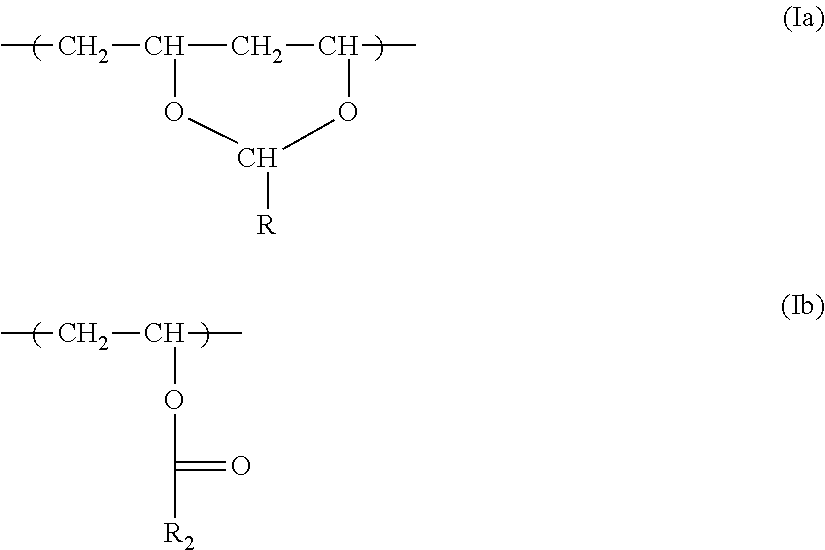Methods of processing using silicate-free developer compositions
a developer composition and silicate-free technology, applied in the field of silicate-free alkaline developer compositions, can solve the problems of increasing the cost of imaging equipment, increasing the noise of imaging equipment, and reducing the efficiency of processing equipment, so as to inhibit the dissolution of aluminum oxide films and complicate the cleaning of processing equipmen
- Summary
- Abstract
- Description
- Claims
- Application Information
AI Technical Summary
Benefits of technology
Problems solved by technology
Method used
Image
Examples
invention example 1
[0193]Samples of Precursor 1 were exposed using the Kodak® Magnus 400 Quantum imager at a range of energies, 50 mJ / cm2 to 200 mJ / cm2 and processed in a Mercury Mark VI processor using Developer 1 (shown below) at 23° C. for 20 seconds.
Developer 1ComponentConcentration (%)KOH2.40PVP0.10Dextrin0.50Zn(NO3)2 × 6H2O0.15d-Sorbitol5.50Water91.4
[0194]The resulting lithographic printing plates were evaluated in various tests. The results are shown as follows.
Corrosion,ClearingLinearityWeight LossPointPointPrecursor(Δm / S, g / m2)CDL %(mJ / cm2)(mJ / cm2)10.080.45090
[0195]These results show that developing the samples of imaged Precursor 1 in a silicate-free developer containing M+2 metal cation (Zn2+) provided very good performing lithographic printing plates, characterized with very low corrosion of the aluminum-containing substrate.
[0196]Clearing Point is the lowest imaging energy at which the exposed regions were completely removed by the developer at a given temperature and time. Linearity Poin...
invention example 2
[0198]Invention Example 1 was repeated except that Developer 1 was replaced during processing with Developer 2 shown below.
Developer 2ComponentConcentration (%)KOH3.20Bayhibit ® AM0.50CaCl2 × 2H2O0.04DowFax ® 2A10.50Hydromax 3000.10Water95.7
[0199]The resulting lithographic printing plates were evaluated for several properties and the results are shown as follows:
ClearingLinearityCorrosion, WeightPointPointPrecursorloss (Δm / S, g / m2)CDL %(mJ / cm2)(mJ / cm2)20.030.26090
[0200]These results show that developing the samples of imaged Precursor 1 in a silicate-free developer containing M2+ metal cation (Ca2+) provided very good performing lithographic printing plates, characterized with very low corrosion of the aluminum-containing substrate. In addition, the developer containing the calcium metal cations is a more environmentally acceptable developer.
invention example 3
[0205]Invention Example 2 was repeated except that the CaCl2×2H2O was increased to show the effect of its concentration in the developer on the image quality of Precursor 1. These following results show how the amount of Ca2+ cations in the developer affects the dissolution of the non-imaged regions of the imageable layer, and the optimal amount of calcium cation that is practical to fully inhibit imageable layer dissolution in Developer 2.
CaCl2 × 2H2O50% dot reading at 100(weight %)CDL%mJ / cm2 exposure0.00543.8No dots left0.0108.9047.60.0201.9048.50.0400.2049.8
PUM
| Property | Measurement | Unit |
|---|---|---|
| mol % | aaaaa | aaaaa |
| mol % | aaaaa | aaaaa |
| mol % | aaaaa | aaaaa |
Abstract
Description
Claims
Application Information
 Login to View More
Login to View More - R&D
- Intellectual Property
- Life Sciences
- Materials
- Tech Scout
- Unparalleled Data Quality
- Higher Quality Content
- 60% Fewer Hallucinations
Browse by: Latest US Patents, China's latest patents, Technical Efficacy Thesaurus, Application Domain, Technology Topic, Popular Technical Reports.
© 2025 PatSnap. All rights reserved.Legal|Privacy policy|Modern Slavery Act Transparency Statement|Sitemap|About US| Contact US: help@patsnap.com



